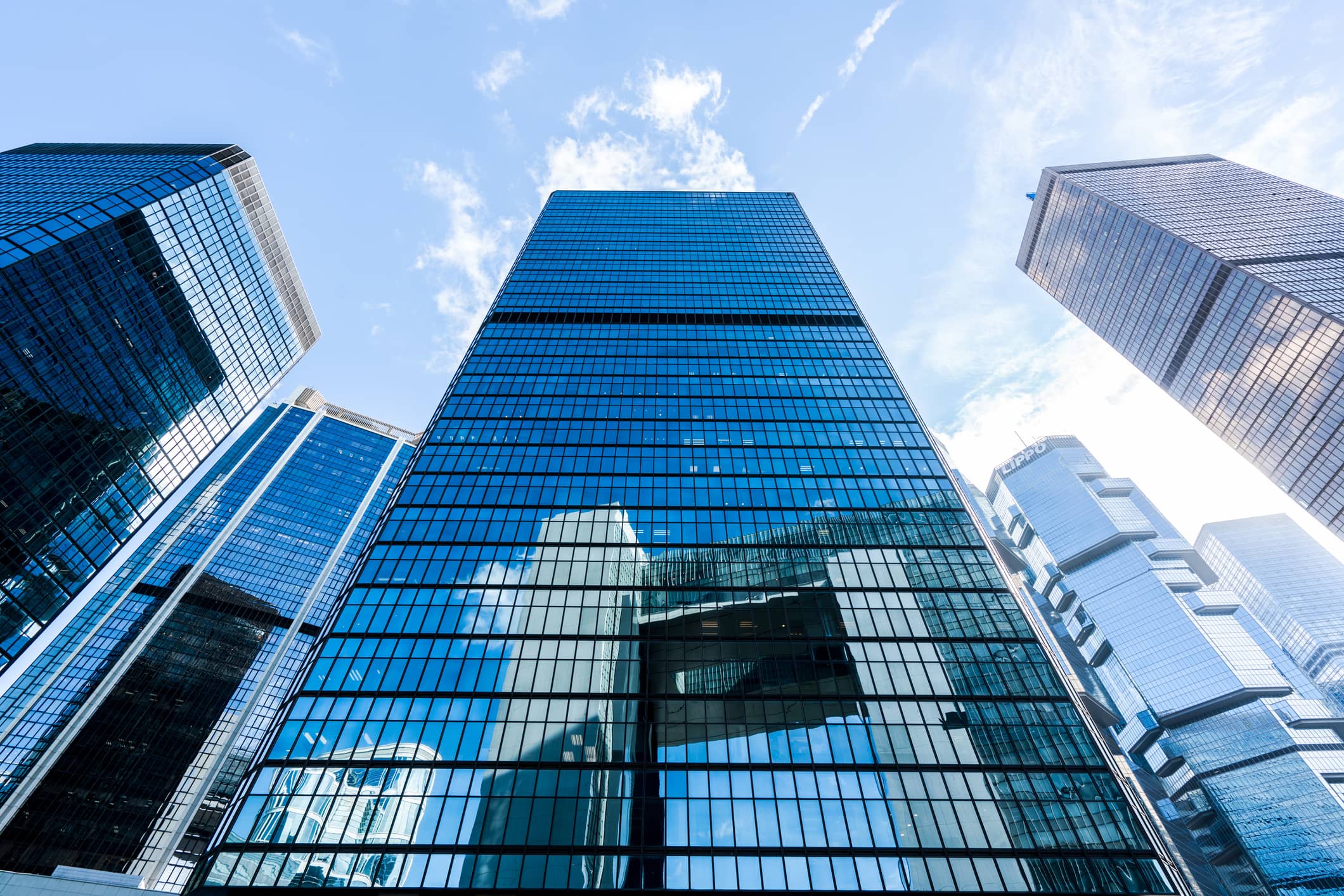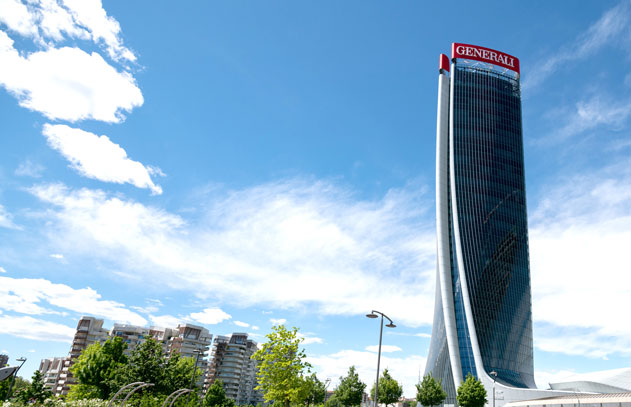Key Investment themes
for 2023
Introduction
2022 saw geopolitics dominate attention, with events in Ukraine unsettling and resetting markets and the global economy. Meanwhile, investors also contended with eye-watering inflation, steep rate hikes and higher volatility across the board.
Will 2023 bring more of the same or are we seeing a fundamental shift in the macroeconomic picture? To answer this, we are pleased to present the latest views from the specialist asset management firms across the Generali Investments platform, as they look ahead to the risks and opportunities that 2023 may present.
DOWNLOAD HERE THE FULL PAPER
The Big Picture
The Market and Macro Research team at Generali Insurance Asset Management introduce the key themes they’re monitoring for 2023.
In our view, 2023 will start in a stagflationary environment, with the major economies flirting with or heading towards recession. The key questions lie in the depth and duration of the recession, as well as the pace of inflation deceleration. This very unusual environment creates high uncertainties, and room for twists and turns through the year. Five themes stand out, in our view.
1. Cracks in financial plumbing as monetary tightening proceeds
High inflation, an ensuing euro area recession and tighter financial conditions are exposing cracks in the financial plumbing. Bond volatility – even if past peak – remains high, the liquidity of even highly liquid assets such as US Treasuries has deteriorated while high quality collateral shortage has mounted, especially in Europe. Banks will suffer from rising provisioning needs. Fortunately, they are much better capitalized than going into the Great Financial Crisis and higher yields help. Yet larger vulnerabilities may be hidden in the non-banking sector. The sharp rise in UK yields in September exposed fragilities among LDI investors, and the FTX crash in the crypto sector, while emerging markets are exposed to ongoing US dollar strength. As central banks tap deeper into restrictive territory and the European Central Bank (ECB) joins the quantitative tightening wave, they will need to tread carefully to not unsettle markets.
2. When will central banks pivot?
Central banks are still showing their teeth, committed to tackling inflation with front-loaded tightening. The Federal Reserve and ECB are set to slow the pace of tightening in December. Yet an outright policy pivot still looks distant as they deem a moderate overtightening less risky than stopping hikes prematurely. Rates are unlikely to peak before late Q1 once central banks take note of sequential readings of slowing inflation, a cooling US labour market, receding inflation expectations and developing recession (mild in the US, more visible in the euro area). Risks of an earlier pivot mainly arise from financial market unrest.
3. Ukraine war and energy transition – short-term drag, but long-term accelerator
Europe is striving to replace disrupted gas and oil imports from Russia. It has restarted coal power plants, increased LNG imports and incentivized new gas exploration in Africa. This is a clear blow to GHG reduction targets in the short term and a major medium-term drag to euro area competitiveness and growth. Longer term the shock is set to accelerate the energy transition to nuclear and green alternatives. The need to curb exposure to future geopolitical shocks only adds to the case for diversifying and greening energy generation.
4. A reshaping of the world order
The Russian invasion of Ukraine and rising US-China tensions – not least over Taiwan – will have profound economic and business implications. With the risk of supply chain disruptions rising, countries and firms will reconsider the trade-off between efficiency and security. Re-shoring or “friend-shoring” to political allies will thrive, potentially severing global trade ties into political blocks (democratic vs. autocratic). This will not only reshape capital flows but will require higher investment and may curb productivity. Increased military spending will add to energy costs, raising new debt sustainability and social stability challenges: a new impossible trinity?
5. China’s slow economic revival
China’s economy has suffered from its zero-Covid policy, an ailing property sector and a regulatory IT crackdown. Chinese authorities are signaling a cautious policy shift. Yet the pace will be slow. Low vaccination rates among the elderly renders a quick reopening risky. Eased regulation may temper acute strains in the property sector but will not reverse its need for a structural decline. Mounting rivalry with the US will accelerate China’s ambitions to be more independent in high-tech and financial services, but replicating knowledge and R&D will bear substantial transition costs. The economy is set to rebound from poor 2022 performance, yet faces a steep uphill battle.
Please note this is the opinion of Generali Insurance Asset Management S.p.A. Società di gestione del risparmio (“Generali Insurance Asset Management”) as at December 2022 and it may evolve over time, without prior notice.

Opportunities abound for resilient environmental companies
The big concerns for investors of all stripes going into 2023 are the energy crisis, inflation, global supply chain disruption and recession risk. There have been some market commentators who say that ESG may now be less important than these pressing matters. However, the need for an environmental transition is inextricable from each one of these concerns. For long term investors, market volatility is an ideal time to strengthen exposure to responsible, high quality environmental companies that can prove resilient in a downturn and profitable in the long-term due to their ability to address the biggest challenges facing our society, economy and planet.
Environmental investing looks at the interactive ecosystem between climate, biodiversity, resources and waste, water and air quality. Each one of these elements feed into each other and that’s why at Sycomore we measure the environmental impact of investee companies using a score called the NEC (Net Environmental Contribution), the only holistic, science-based and value chain-specific environmental metric that measures physical units of impact over a full life cycle, whether that might be GHG emissions, tonnes of waste or water, total resources used, etc. As a society, more and more companies, investors, regulators and consumers are starting to understand how the environment and the economy is interlinked. Public opinion, policy (whether intergovernmental, national and local) and regulation (whether through budgets or tax incentives) continue to drive forward in its understanding of the complex ways we interact with and impact the environment. Companies can underperform or outperform due to resource or environmental constraints in their supply chain or operations, whether that be raw materials or energy costs.
As bottom-up stock-pickers, we find opportunities across all environmental sectors, although there are a few that we think are particularly exciting going into 2023. The energy sector continues to be compelling given the energy transition. Higher capex, higher power prices and higher costs of financing are all impacting the energy sector and causing swings in volatility which provides ripe opportunities for long-term stock-pickers. Solar stocks remain compelling with intense growth that has finally been unlocked by the Inflation Reduction Act tax incentives in the US or RePowerEU in Europe. We like utility scale solar as it offers one of the quickest routes to independency.
But energy goes beyond just renewables (although they are key long term as well especially as costs have become drastically more competitive): energy efficiency, buildings efficiency, green mobility, renovation and construction, and the circular economy are themes that we use to identify businesses that will enable the transition to a decarbonized economy. We would also offer a word on caution on the more hyped solutions in the energy sector, such as hydrogen or carbon capture, usage and storage (CCUS), which represent a small portion of the economy and offer only a marginal impact on total emissions.
Other sectors we favour going into 2023 include sustainable natural resource management (such as forest and water management) and environmental services such as those in infrastructure planning and pollution control. Other opportunistic themes in our strategies include transition metals and their circularity. Beyond sectors however, we continue to look for companies that are genuinely transforming their business models in environmental terms to meet the challenges of a rapidly changing world. These are the companies that we believe are best-placed and resilient enough to withstand volatility over the long term and create lasting value for investors. To illustrate, copper, which is heavily needed for electrification, can be approached through different stock ideas. For example, a copper recycling company may offer more resiliency in a volatile price environment; while a cable company that integrates copper recycling into their business model may have a competitive advantage for the future by increasing self-sufficiency for this critical raw material.
Anne-Claire Abadie, Portfolio Manager, Environmental Manager
Please note this is the opinion of Sycomore Asset Management as at December 2022 and it may evolve over time, without prior notice.

Emerging Market (EM) asset prices have been shaped by three phenomena in the new millennium: 1) the strength of the US dollar, 2) China’s growing economy, and 3) increased geopolitical stability tied to growing cross-border trade.
The decline in US interest rates and mushrooming global economy tied to China provided tailwinds helping propel EM debt and equities, but this has been working in reverse in 2022 – tailwinds are now headwinds. The US dollar has been strengthening due to record interest rate hikes, and China’s economy has decelerated domestically due to strict Covid lockdown policies, hurting stock and bond prices worldwide. And don’t forget geopolitical stability – that ended in February when Russia invaded Ukraine and heavy trade sanctions were enacted.
When will the storm end? Judging from past cycles, EM asset prices typically turn a few months after the last US rate hike. And one would expect China’s economy to resume solid growth again after the government relaxes their Covid restrictions. But geopolitical tensions and sanctions may linger, which makes the timing of a long-awaited EM rally difficult to predict. In the meantime, EM assets – debt, equity, and currencies – all have cheapened dramatically in 2022 and offer investors an opportunity to increase exposure at bargain prices.
Peter Marber, CIO Emerging Markets
The key market narrative will now begin to change from inflation to growth. Inflation will decline but disappointingly slowly, leading to interest rates being kept higher for longer. The key is the 2-year/10-year US Treasury curve inversion – which at the time of writing on November 20, is down -70bps. In our assessment, this indicates that a deep recession is on its way.
The world has never experienced such a backdrop when it has been:
1) Awash with debt, 2) In a post-Covid recovery state, 3) Emerging out of ten years of zero interest rate policy and QE, and 4) Struggling with the geopolitical fallout from Russia and China.
Looking ahead to 2023, therefore, we have the following views:
Investment grade credit will outperform high yield as government bonds steady and concerns turn to growth, leading to spread decompression
European credit will outperform the US (it’s cheaper, better quality, and would benefit from any Ukrainian conflict cessation)
Default rates will end higher (over 2023/2024) than the market expects due to severity of the downturn, 2024 maturity walls, and the low quality of credit fundamentals in the leveraged loan market
Volatility will remain elevated and much greater dispersion will occur in BB and B credit spreads as the market starts to bifurcate between the winners and losers in a recessionary environment.
Simon Thorp, CIO Credit
Will 2022 be the year of the “big low” in financial markets? It may potentially be the year of the “big opportunity” as well.
In 2021, tightening financial conditions put significant pressure on equity markets around the world but did not result in a so-called ‘black swan’ credit event. Will we see one in 2022? Very possibly, as history generally rhymes. However, it is also very plausible that the scars of Lehman’s collapse run too deep and explain why the near-misses in margin calls we’ve had so far (gas price, LDI, commercial real estate) did not result in systemic liquidity events.
We are in the process of bottoming as we are watching the most “telegraphed global recession” in history. How deep recessions will go, and how much earnings impact they will have, are big unknowns. While it is nearly impossible to pinpoint absolute lows, it is important to bear in mind the big picture. First, bear markets don’t generally last long. Second, positioning also plays an important role. Positioning has rarely been so negative, especially on a relative basis in Europe. We appreciate how missing out on the top five to ten best days in a year can totally flatten the returns over a longer timeframe, hence the importance of staying invested.
The innovation picture is now very blurred by fear of cyclicality, inflation, and rising rates. In Europe, it is even obscured by fears over war and energy supply. “Big lows” are the ideal opportunities to take advantage of lower valuations. Catching them is always challenging, but we believe we may have a good window ahead of us.
Anis Lahlou, CIO Equity
Please note this is the opinion of Aperture Investors as at December 2022 and it may evolve over time, without prior notice.
The New Normal:
Will carry and asset decorrelation favour income and multi-asset in 2023?
D2022 has been a transitional year towards a “new normal” in the financial markets, ending a prolonged period of muted but persistent economic growth with low inflation, low interest rates – that turned negative during the pandemic – and central banks always ready to intervene with abundant liquidity injections in case of volatility spikes.
In the “new normal” inflation won’t be a temporary phenomenon linked to the post-pandemic strong demand or to a more difficult supply chain; it will likely be a more structural element of the macro picture and a more relevant element in the investment decision process, with central banks resuming their role of price stability guarantor.
Geopolitics is another important element that impacted financial markets this year, with the Russia-Ukraine war that started in the heart of Europe and further tensions that could potentially explode in the far-east with the critical situations in Taiwan and in North Korea. After the pandemic effects, the trend towards deglobalization may increase the risk of more structural inflation in the system.
The current tightening cycle will probably lead to a marked slowdown or a recessionary scenario for the economy that will weigh on financial markets. In a challenging environment like this, a flexible approach to asset management activity would be prudent, looking to global markets to find the best investment opportunities.
In terms of investment strategies, 2023 will probably be a good year for “income” investing. Fixed income was probably the asset class that surprised more negatively in 2022, being unable to protect portfolios in a difficult environment after several years of financial repression. Now, the rebound of yields into positive territory should offer interesting carry opportunities for investors and could potentially offer mitigation against inflation risk.
Equities remain challenging, with corrections driven by multiples compression resulting from the strong increase of real rates, but maintaining resilient earnings expectations. This is not coherent with a slowdown or recessionary scenario, representing a risk for investors. Going forward a stabilization of market yields amid a slowing economy could help to balance growth sectors versus value sectors. Companies need to increase their capex to improve productivity levels amid a higher costs base, which could favor machinery and software industries. An adjustment in earnings is need to make the equity market investable with more conviction and in our view this will probably happen during 2023.
We would also expect some ESG issues, such as low carbon, digitalization, and the energy transition, to regain traction after a stabilization of market yields, both in equities and fixed income.
Looking ahead, we consider it is reasonable to expect asset classes to decorrelate once more, after a long period of moving in the same direction. In our view, this environment will favor the flexibility and adaptability of multi-asset solutions that offer both traditional and thematic strategies.
Salvatore Bruno, Head of Investments
Please note this is the opinion of Generali Investments Partners S.p.A. Società di gestione del risparmio (“Generali Investments Partners“) as at December 2022 and it may evolve over time, without prior notice.
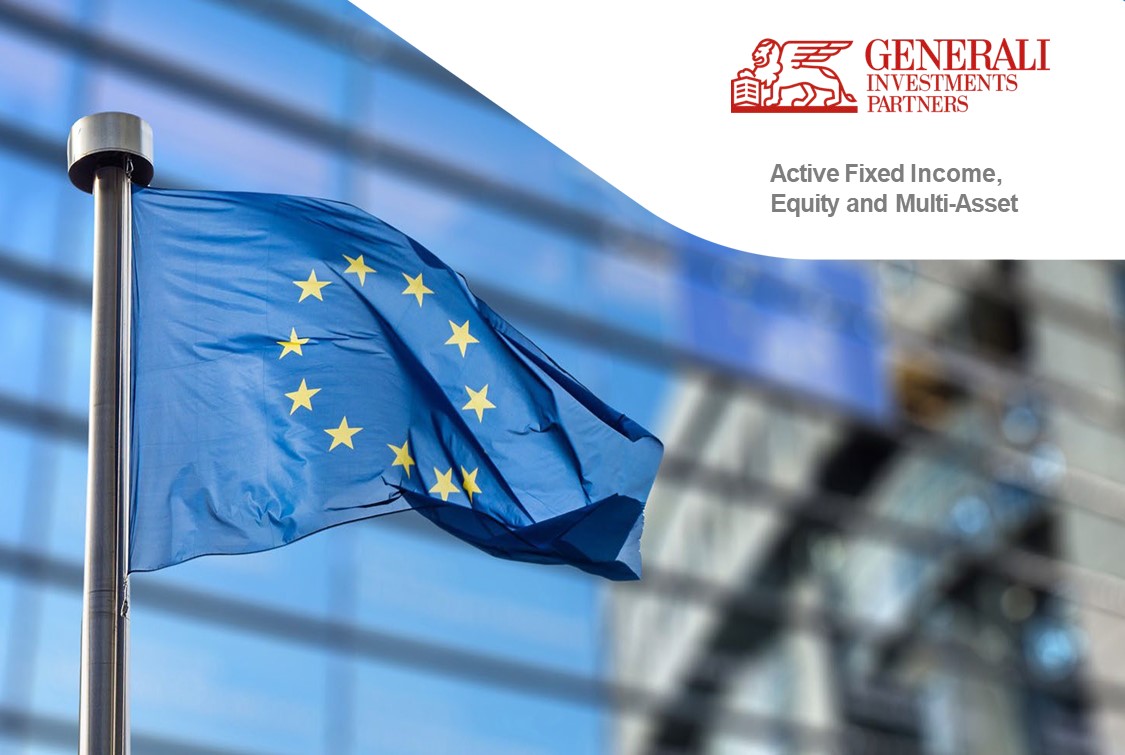
Investment grade credit and energy stocks are two key ingredients for 2023
Not going back to the previous regime, but some rate stabilization expected
2022 will be a year to remember for several reasons: eye-watering inflation prints, a frontloaded and sharp hiking path that is still unfolding, extreme price actions, and rates volatility. Supply chain and energy issues persist, while inflation is still the number one priority for central banks. However, 2023 should be a year of relative stabilization and decreasing rate volatility.
As we are likely progressing into a more advanced phase of a steep hiking cycle, cliff edge effects on growth could calm the impetus of central banks and rates markets. Meanwhile, stronger supply and potentially lower demand should lead to steeper curves on the longer end, especially if quantitative tightening finally kicks off. At the other end, fiscal expansion could also lead to some term premium being rebuilt on the euro curves.
New terms of the TLTRO should alleviate the collateral shortage, freeing up eligible assets and helping swap-spreads to shrink back.
Investment grade credit: the first risk lever for insurance portfolios
A stabilization of yields would bode for longer duration in fixed income; coupled with lower rate volatility, this would help credit spreads to stabilize and eventually tighten. Hence, investment grade bonds seem the best option to navigate and benefit from this scenario.
Compared to riskier and higher beta bonds, high grade credit offers good rate sensitivity on one hand, and potential appreciation linked to tighter credit spreads on the other hand.
As an indication, returns for BBBs are around 4.5%, with credit spreads pricing in higher implied defaults than are likely to materialize, and well above 10% cumulative returns over a 5-year horizon.
Based on such metrics and with yield-to-worst above equity dividend yields, investment grade bonds should represent the first lever of risk to add in insurance portfolios. After a year of unprecedented negative returns and strong repricing in yields, we expect positive total returns in 2023.
Energy companies will continue to outperform
Notwithstanding the good performance of the oil sector in 2022, we think that the energy sector could perform well even in 2023 too thanks to a good balance between supply and demand, still undemanding valuation and more disciplined investment plans. Although any de-escalation in Ukraine could provide some short-term profit-taking the mid- to long-term fundamentals remain strong given that the ban on Russian oil will keep the energy market imbalanced and that will lead to higher energy prices over time. In this environment we expect that energy companies will be the real winners and will continue to outperform the market, since they will generate a generous amount of free cash flow which will be in part allocated to investment, including the transition to a net zero carbon world, and in part to remunerating shareholders.
China’s “reopening”
After a long period of zero-Covid policy characterized by extensive lockdowns and business disruption, China announced actions to optimize control measures and reduce quarantine requirements on close contact and for inbound travelers, sending the signal that it is preparing for a relaxation. This has to be seen together with the recent news that Biontech was filing for distributing its vaccine in China in partnership with a local entity. A reopening, albeit partial, of the second biggest economy in the world would clearly be a positive outcome for all stocks with significant exposure to the area, such as those related to luxury, autos, etc. A reopening would also be very positive for energy and commodities as China is the biggest consumer of energy and commodity in the world and any reopening would significantly increase demand.
Focused on companies with sound balance sheets
With interest rates moving higher, all companies will face a higher cost of debt which will erode operating profits. Next year it will therefore be important to discriminate between companies with strong balance sheets that will not be too impacted by higher debt costs and those that will struggle to remain profitable after financing costs are paid.
Giuliano Gasparet, Luca Finà, Head of Equity
Sebastiano Chiodino, Head of Fixed Income
Please note this is the opinion of Generali Insurance Asset Management S.p.A. Società di gestione del risparmio (“Generali Insurance Asset Management”) as at December 2022 and it may evolve over time, without prior notice.
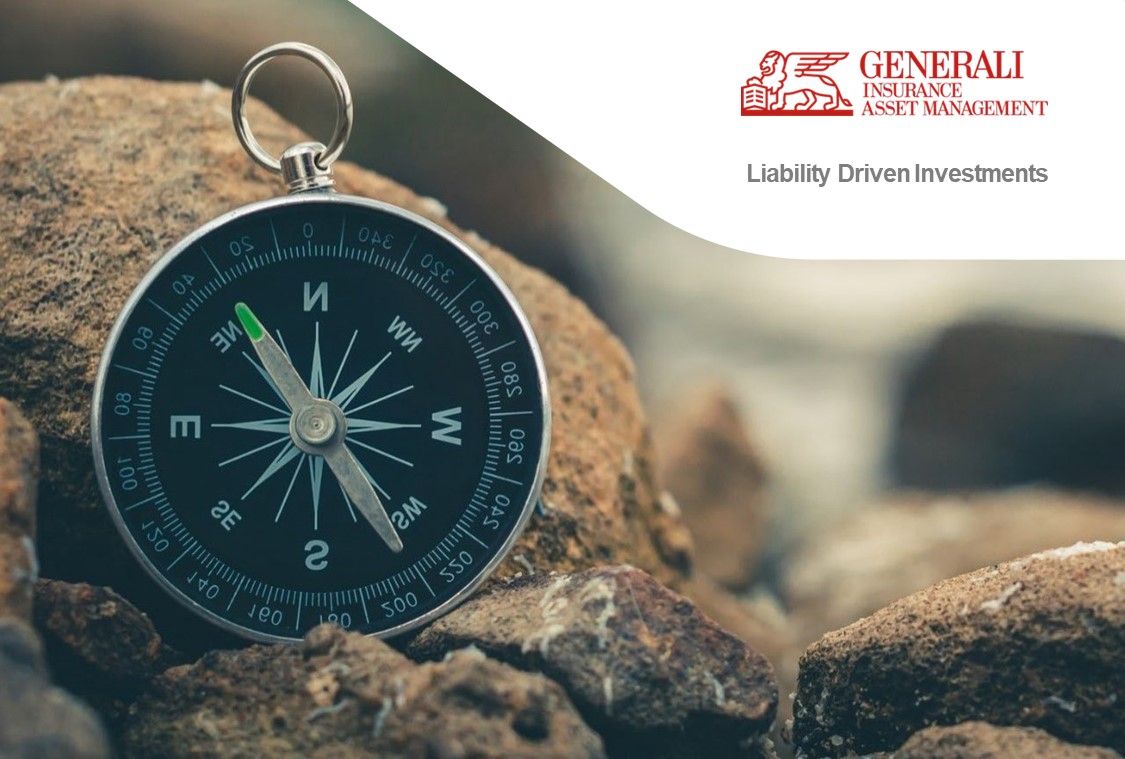
A world in transition
We believe that a transition is underway from a world of moderate but decent growth, low inflation and an abundance of labour, capital and raw materials, to a world of lower growth, structurally higher inflation and scarcity of labour, capital and raw materials, especially energy. How we as investors manage to navigate this transition is the major issue we will face in the coming years.
We think that an appropriate investment strategy moving into 2023 will be to remain cautious and monitor inflation trends and the reactions to monetary policy, fiscal policies and the developments in geopolitical hotspots. The approach we maintain is therefore neutral in terms of beta, while the lion’s share of our risk budget will be allocated to protection against ongoing bear markets.
In equities, we continue to exercise caution, as we expect corporate earnings to remain under pressure from slowing demand and falling margins due to rising input costs. In addition, rising interest rates will still act negatively on valuation multiples. We believe that the greatest stock-picking opportunities could be found:
in terms of style, in “value” rather than “growth”;
in terms of geography, in Europe and emerging markets;
in terms of size, the stocks of small- and mid-cap companies.
We continue to look with interest at the energy sector and commodities related to the energy transition. Indeed, we believe that there are significant opportunities linked to the scarcity of raw materials necessary for the transition (copper, nickel and zinc above all). With regard to the traditional energy sector, on the other hand, we think that the sharp drop in extraction and refining investment over the last decade has produced a structural hike in returns, which, in the absence of new investment plans translates into strong cash generation and a healthy return on investment for shareholders.
In fixed income, we continue to have a reduced duration exposure. We believe that in the first adjustment phase, corporate bond yields will tend to become competitive with equity yields within the capital structure.
A crucial point in our strategy in the coming months will be determined by currency positioning, particular regarding the US dollar. The moment the dollar appreciation trend starts to reverse, a new market scenario may arise that would affect not only currency markets, but equity and bond markets as well. In this case, opportunities in emerging markets would reappear on the horizon. The two most important elements that we believe should be monitored with regard to the dollar trend are the improvement of the domestic economic cycle in China and the easing of geopolitical tensions, especially related to the war in Ukraine.
Looking more broadly at China's prospects, we expect it to continue on its growth path, albeit at lower rates than in the past. A prudent way to identify investment opportunities will be to focus on domestic issues with the greatest growth potential and a lower exposure to the country's political agenda. Stock picking in the context of ongoing secular trends, such as improving living conditions and improving domestic energy infrastructure, remain crucial and will continue regardless of international geopolitical issues.
Looking ahead to the coming months, we expect periods of relief from the current downward trends, mostly linked to market perception of a pause in central bank tightening, but we expect that 2023 will still be a challenging year for risk assets, at least in the first half.
Giordano Lombardo, Chief Executive Officer & Co-CIO
Please note this is the opinion of Plenisfer Investments as at December 2022 and it may evolve over time, without prior notice.

An alternative harvest available in energy transition and credit
The past year has been a perfect example of the rationale for including an allocation to alternative strategies. The traditional 60/40 long-only balanced portfolio has seen one of its worst periods of performance in 2022, as both global equities and fixed income sold off significantly. The case for alternatives is a diversification story. For a long time, rising valuations in both fixed income and equities didn’t always benefit hedge funds. Going into 2023, higher volatility, wider stock dispersion, increased macro uncertainty and positive interest rates can combine to create a favourable environment for long-short investing.
An alternative approach to ESG
Events this year have focused attention on the need to solidify and accelerate the move away from dirty fossil fuels to a lower carbon, cleaner energy producing future. Analysts are talking about an opportunity set of anywhere from $10-$15 trillion. That obviously needs to be taken with a grain of salt but, for example, in the wind and solar space, on an EBITDA basis we expect the opportunity set to grow over six times in the next ten years. Even if you take a cautious view, that still opens up some big investment opportunities.
In our view, a long-short approach to investing in the energy transition theme is a compelling way of capturing the total opportunity set while managing the high level of volatility and uncertainty that comes with such a new and pioneering investment universe of companies.
On the long side, our portfolio managers look for cashflow positive companies that have an identifiable edge, backing those companies as they grow. On the short side, we look for laggard companies on a relative value basis, that may be in the right space but are not exploiting the opportunity as well or efficiently as others in the sector. The team can also use other market hedges to protect the portfolio in periods of market stress, the impact of which is seen clearly earlier in 2022.
Systematic, data-driven credit investing
The world of fixed income investing is changing rapidly. The advent of electronic trading platforms is transforming the way investors can access credit investments, but also the way portfolios can be managed and traded. We believe the scientific method, one that combines human intuition with quantitative techniques able to analyse, test and execute data on an industrial scale will be key as the one-way trade in fixed income for the past ten years breaks down and single name credit risk comes to the fore.
One of the challenges for traditional discretionary credit managers is the ability to build a genuinely market neutral portfolio. The size of the market is vast and neutralising a portfolio against unwanted market duration or credit risks is exceptionally challenging in a concentrated portfolio. In contrast, a systematic credit strategy can analyse and rank opportunities across many thousands of corporate bonds. By using data in a scientific way, a systematic manager can build a much more tailored portfolio to try to neutralise factor exposures such as credit risk, duration risk, or market beta. A strategy like this flourishes in a challenging macro environment. Looking ahead to 2023, we see the trend of single name credit dispersion continuing, creating a rich opportunity set for this investment approach focused as it is on delivering truly market neutral credit returns.
Paul Holmes, Head of Distribution
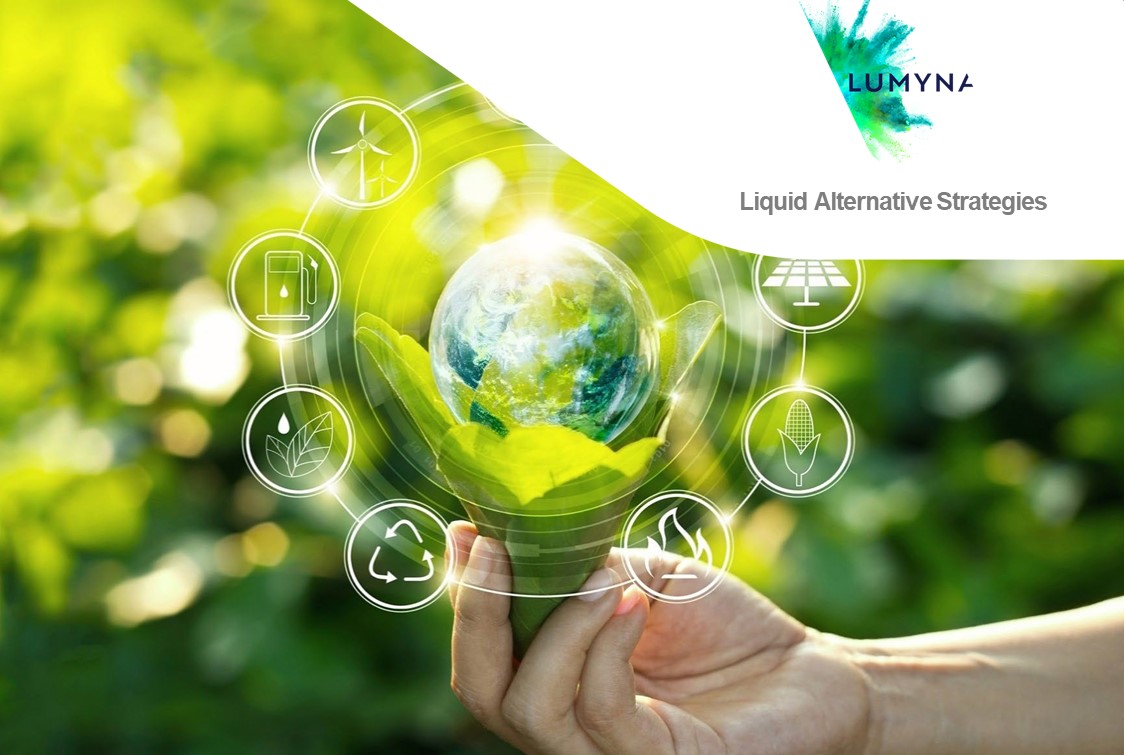
Real estate: quality and growth to navigate volatility in 2023
At Generali Real Estate we believe that choosing quality in a crisis should offer lower volatility, helping portfolios to readjust more quickly to positive rebounds. Quality in real estate can be characterized by location and features. We have identified four major opportunities for 2023:
High quality offices in gateway cities prove resilient
Logistics benefit from strong e-commerce and supply chain re-shoring demand
Commercial real estate debt offers optionality and appealing returns
Sustainability as a main investment selection criterion across all real estate asset classes
1. High quality offices in gateway cities prove resilient
Major European cities are continuing to grow in terms of demographics and attracting talent, especially younger generations. This creates a favourable environment for active tenant demand that – through the lease a building – is able to provide cash flow to investors.
In the office sector, high quality tenants are pursuing well-connected buildings (i.e. city centers or semi-central locations properly served by a public transportation network) with high real estate quality (i.e. focus on wellbeing, amenities, meeting rooms and collaborative areas) to foster a positive environment that allows tenants to generate and sustain a company culture that attracts the best talent. A prime building with a strong tenant is well-positioned to act as solid inflation hedge: in terms of income, a blue chip tenant can cope with inflation and from a real estate point of view, the asset’s value can consequently increase. ESG is also key for tenants, managers and landlords, from reduced energy consumption to improved user wellbeing.
2. Logistics benefit from strong e-commerce and supply chain re-shoring demand
Logistics can now be considered as an established asset class where structural factors such as e-commerce growth and the re-shoring of supply chains can drive demand for tenants and consequently for investors.
Online sales will not be the only way people will buy goods, but we are confident that the market will continue to grow in coming years. Since e-commerce retailers cannot have the physical stores that can act as storage, they need three times more the space of “bricks & mortar” retail and therefore a margin growth of e-commerce represents an exponential growth for warehouse space.
As the war in Ukraine and geopolitical tensions are showing every day, there is a strong need to shorten supply chains (“re-shoring” or “near-shoring”) and to increase inventories (switching from ”just-in-time” to “just-in-case”) to ensure stable delivery of goods and products. That means even more goods need to be stocked in warehouses, creating more demand.
3. Commercial real estate debt offers optionality and appealing returns
In light of an expected downturn in 2023, the banking sector is becoming more risk averse and reluctant to loan money to complex real estate projects. In contrast, alternative lenders are well-equipped to properly assess risk and provide financing on a selective basis.
It is worth mentioning that senior real estate loans are uniquely positioned to navigate uncertainty: i) with floating rates, it is possible to hedge interest rate hikes, and ii) having a loan to value around 60%, they can absorb a potentially severe market correction it without affecting the loan itself.
4. Sustainability as a main investment selection criterion across all real estate asset classes
The role of ESG screening across the real estate value chain – from an investment due diligence process to the day-by-day tenant management and relationship – has grown from “nice-to-have” to an integral part of risk analysis and a key component for value protection in the long term. Real estate investors show a growing appetite for ESG-labeled investments, both in terms of increased demand for products with robust ESG screening methodologies, and in terms of strong ESG evidence for the underlying assets and funds.
Growing regulatory demand (EU taxonomy, SFDR, Fit for 55, etc) create a harmonized framework and “raise the bar” for real estate players. The more responsible ones are already well ahead in pursuing their ESG commitments, for example as part of the UN Net-Zero Asset Owner Alliance.
Please note this is the opinion of Generali Real Estate SGR S.p.A. (“Generali Real Estate”) as at December 2022 and it may evolve over time, without prior notice.
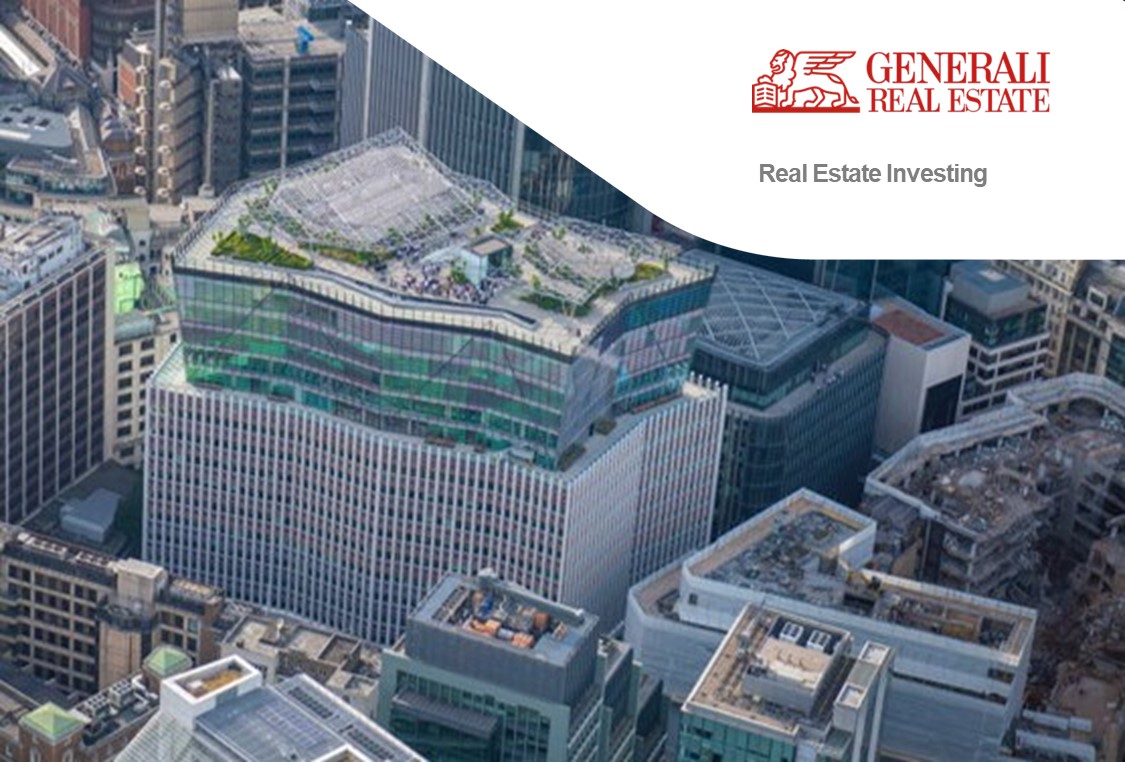
Infrastructure in 2023:
Energy revolution, digital evolution and opportunities galore
In 2022, infrastructure investors experienced once again the resilience of their investments under duress as their assets exhibited significantly lower volatility during the most tumultuous periods. In 2023, a combination of strong economic demand (especially around digitalization and transportation), social convictions (the move towards greener and more sustainable solutions) and political support (particularly regarding the energy transition) will keep driving the fundamentals of infrastructure investments.
A tectonic rethink in energy provision
In this, the new year is no different from recent years and we expect those trends to continue long into the future. However, due to the Russian invasion of Ukraine last February, the strategic question regarding the energy provision of Europe has jumped to the fore.
The impact of spiralling energy prices, sanctions, output reductions, et al. have triggered a tectonic rethink in how to procure energy sustainably and with greater autonomy.
As a consequence, we see 2023 as the year of energy transformation and revolution in Europe. Considering a geopolitical landscape with elevated threat levels regarding energy supply, we see an acceleration that is channelling capital to decarbonize “dirty” assets, especially coal but also gas, and increase alternative sources of energy production. Solar PV (photovoltaics) are a cleaner substitute and in tune with societal goals. This is backed by a strong government push to simplify permitting processes accelerating the pipeline of PV asset across Europe.
Offshore windfarms, facing less communal opposition than their onshore brethren, are accelerating their build-out, particularly in the most established markets in Europe, such as the UK, Germany and the Netherlands. There are also robust deal pipelines in the Baltics and Poland while southern Europe is planning offshore platforms in the Mediterranean.
Biogas investments, a ready replacement for dirtier natural gas, are accelerating, too. Pressing EU targets to get to over 20% of biogas replacing natural gas in European gas consumption are meant not only to be greener but strategically important as they reduce the reliance on imports, be it from Russia or via expensive LNG solutions.
Distributed generation solutions, like residential rooftop PV including storage and charging facilities, are being deployed at scale by platform investors across Europe. Given today’s energy prices, limited or no government support is needed to make the economics work. Germany and Spain are growing particularly fast in this area.
And finally, larger and more efficient energy storage solutions will become more prevalent in the future. Better storage solutions contribute to greater resilience of the energy system and increase its efficiency.
Digitalization and debt financing
Besides the energy revolution, we expect the digitalization trend to continue and evolve further. The Covid-19 crisis highlighted the need for efficient digital and cloud infrastructure. It also unearthed new societal preferences on how to live and work together. Data centers and broadband connectivity, fibre in particular, face an enormous supply-demand gap and thus require massive private investments.
It is interesting to note that the tendency to replace banking financing with other means of providing capital, especially via long-term orientated investors, continues. We see a particular demand for HoldCo-level debt financing as increased interest rates are leading banks to be more cautious, especially given geopolitical and financial market uncertainty.
Overall, we remain optimistic based on the historical outperformance of infrastructure assets, particularly in times of higher volatility, and the strong undercurrents that promise a healthy deal-flow. However, we keep our eyes open to avoid the potential pitfalls that are so easy to miss in a complex asset class in an even more complex environment.
Patrick M. Liedtke, Chief Client Officer & Chief Economist
Please note this is the opinion of Infranity as at December 2022 and it may evolve over time, without prior notice.
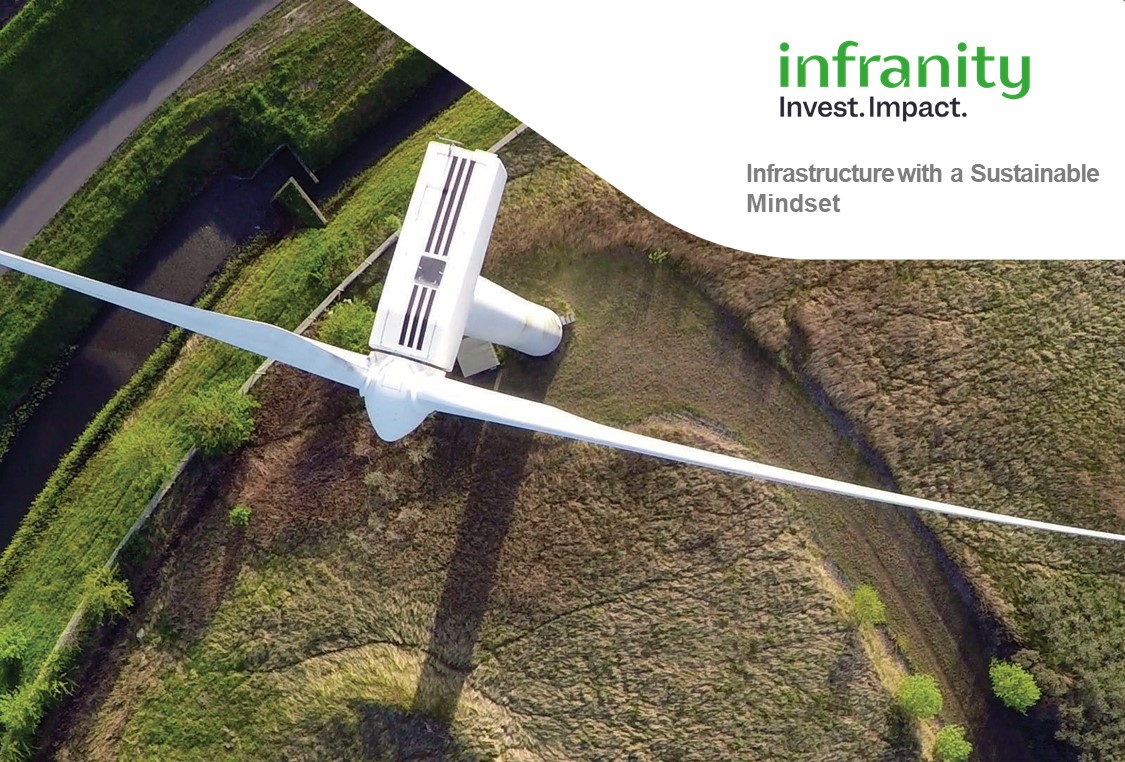

Let's talk
Please contact us if you need support with the products or services of Generali Investments. We will get back to you as soon as possible.

